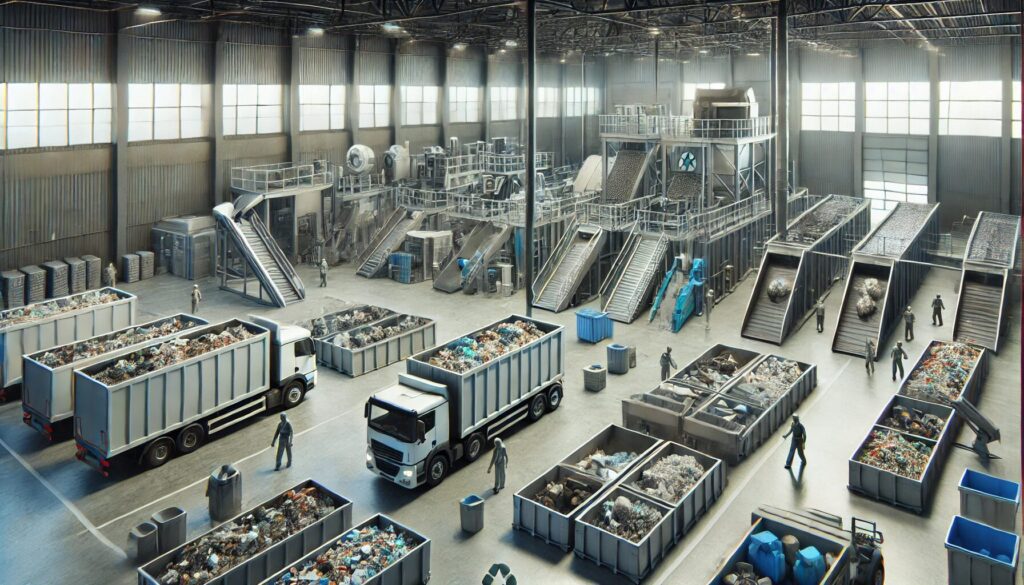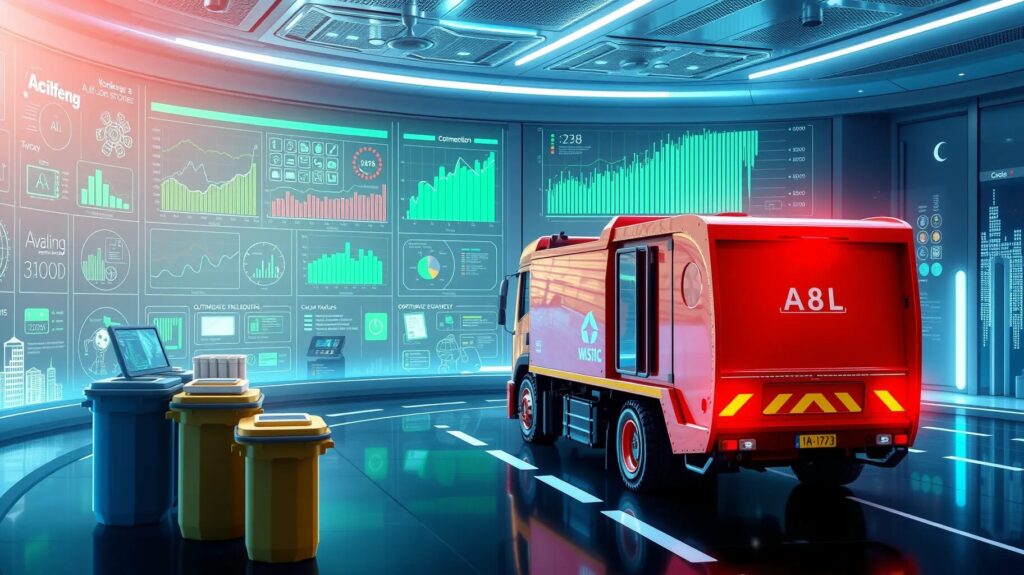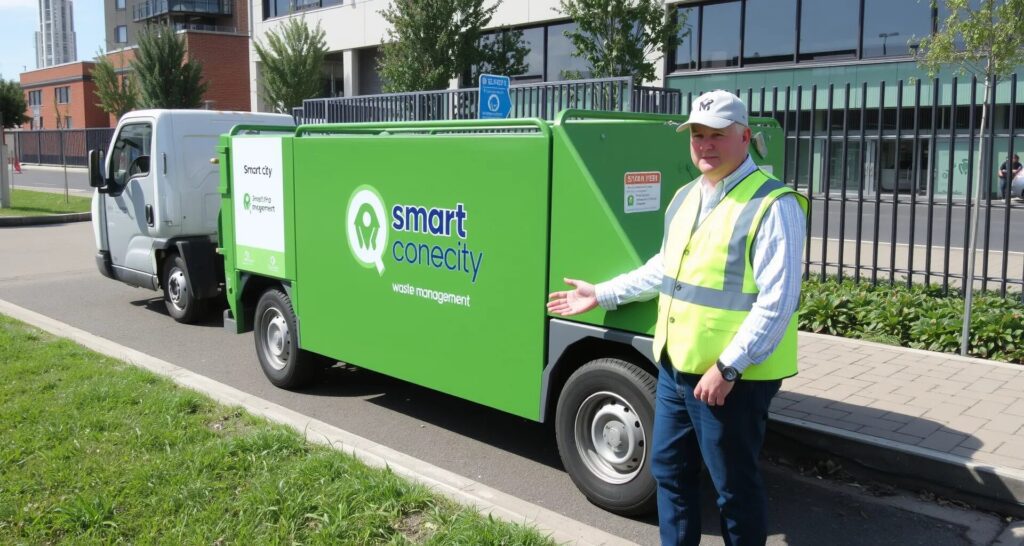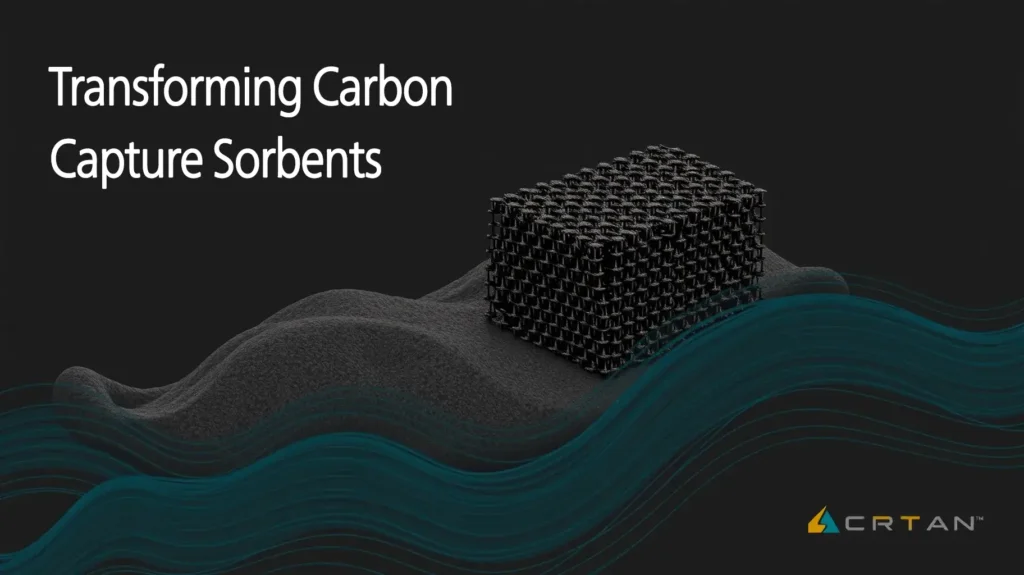
Revolutionizing Waste Management with Predictive Analytics
In the fast-paced world of modern waste management, predictive analytics is not just a buzzword—it’s transforming the industry from top to bottom. Have you ever considered how a city or a business could predict when and where waste will overflow before it happens? It sounds futuristic, right? But this is exactly what predictive analytics is making possible. By using sophisticated algorithms and analyzing patterns, waste management companies can now forecast peak waste times, prevent overflows, and ensure that collection routes are optimized down to the last detail.
This shift from reactive to proactive waste management doesn’t just solve problems faster—it prevents them from happening in the first place.
How Overflow Issues Are Impacting Cities Today
We’ve all seen it: the overflowing trash bins in parks or city streets that seem neglected for days. Overflowing bins not only cause unpleasant odors but also attract pests and affect the overall hygiene of neighborhoods. While this may seem like a minor issue to some, in densely populated areas, it’s a public health hazard and an eyesore. This is where predictive waste management can step in. By predicting when waste will reach its peak in different areas, municipalities can avoid overflowing bins altogether.
Moreover, if bins aren’t emptied on time, it can cause a snowball effect. Overflowing trash becomes harder to manage, increasing the time and cost of collection. Predictive analytics can prevent this by keeping track of fill levels and alerting waste collectors when bins need attention.
The Role of Big Data in Predicting Waste Trends
One of the key drivers behind predictive analytics is big data. Today, waste management companies collect huge amounts of data from sensors placed in bins, trucks, and recycling facilities. These sensors monitor things like bin fill levels, temperature, and location. By analyzing this data, algorithms can identify trends, such as when and where waste is generated the most.
What does that mean for the future? It means we’ll be able to predict spikes in waste around holidays or major events. It means the system will learn, adapt, and get smarter over time, ensuring a seamless collection process. Data-driven insights are the backbone of a successful waste management strategy.
Optimizing Collection Routes: More Than Just Efficiency

Efficiency is key in waste management, but optimizing collection routes offers benefits far beyond faster pickup times. Smart routes save fuel, reduce emissions, and lower the wear and tear on vehicles. Instead of following the same rigid paths, waste collection trucks can now take real-time data into account—like which bins are full or which streets are blocked due to construction.
This dynamic route optimization not only reduces the environmental footprint of the industry but also cuts down operational costs. When you factor in fuel savings and reduced labor costs, the benefits of predictive analytics become crystal clear. Imagine a world where trucks only make stops where they’re needed. Less driving, less waste.
Why Traditional Waste Collection Methods Fail
Traditional waste collection methods, where trucks follow fixed routes at fixed times, don’t always align with reality. These systems may work for a while, but they’re full of inefficiencies. Some bins are emptied when they don’t need to be, while others overflow before they’re picked up. The unpredictability of waste levels is the Achilles’ heel of the old system. And in a world where sustainability and cost-efficiency are paramount, these outdated methods simply don’t cut it.
More cities are now turning to predictive waste management solutions to solve these issues. These systems not only prevent problems but also allow for more agile and responsive service. And in doing so, they address one of the most persistent problems in waste management—waste overflow—while also making the system more environmentally friendly.
How Machine Learning Enhances Predictive Models
At the heart of predictive analytics is machine learning. This technology enables the system to get better and more accurate over time. How? By continuously analyzing data from bins, trucks, and sensors, machine learning algorithms refine their predictions, becoming more precise. This means the system can not only predict when a bin will overflow but also anticipate changes in waste patterns, like a sudden increase in plastic recycling due to seasonal trends.
The beauty of machine learning is that it adapts. Waste management companies don’t have to constantly reprogram their systems. Instead, the system learns from past mistakes and successes, constantly improving its efficiency without human intervention. This is the future of waste management—where automation and intelligence come together seamlessly.
The Environmental Impact of Optimized Waste Routes
We can’t ignore the environmental benefits of route optimization. Think about the number of trash collection trucks rolling through city streets every day. Now, imagine if they only made stops at full bins and followed the shortest possible route to do it. The fuel savings alone would be significant. Fewer trucks on the road also means reduced emissions, which is a big win for cities looking to lower their carbon footprint.
But there’s more. With optimized routes, there’s less traffic congestion and less wear on city streets. This isn’t just good for the environment—it’s good for the city budget too. Predictive analytics doesn’t just solve waste problems; it contributes to a cleaner, greener, and more sustainable urban landscape.
Real-Time Monitoring: A Game-Changer in Waste Collection
Incorporating real-time monitoring into waste collection processes takes everything a step further. With sensors providing live data on bin levels, truck location, and even traffic conditions, waste management systems can respond instantly to changes. For example, if a bin starts to overflow earlier than expected, the system can immediately adjust the collection route.
This level of responsiveness ensures that no bin is neglected, and no resource is wasted. And for municipalities, this means fewer complaints from residents about overflowing trash, and a more reliable, transparent waste collection system. Real-time monitoring transforms waste management from a static, scheduled process into a dynamic, responsive service.
Saving Cities Money with Smarter Waste Management
When cities adopt predictive waste management, the financial benefits are undeniable. By reducing the number of unnecessary pickups, cities can save on fuel costs, labor, and vehicle maintenance. Optimized routes mean trucks drive fewer miles, which extends the life of city-owned vehicles and reduces costly repairs.
Additionally, predictive analytics can help cities avoid fines related to waste overflow or missed pickups. With fewer overflows, there are also lower costs associated with clean-up efforts and pest control. In the long run, these savings can be reinvested in other city services, making the overall system more efficient.
The Rise of Smart Bins: A Step Towards Automation
As smart bins become more common, we’re witnessing the first steps toward a fully automated waste management system. These bins, equipped with sensors, can detect when they’re full and send notifications to collection trucks. Some advanced models even compress the waste, allowing them to hold more before they need to be emptied.
These innovations in bin technology mean fewer pickups and less need for manual intervention. As smart bins become more widespread, cities will see even greater improvements in their waste collection efficiency. Automation and predictive analytics go hand in hand, pushing the waste management industry into a future where waste is managed intelligently and autonomously.
Tackling Recycling Challenges with Predictive Analytics

Recycling is one of the biggest challenges cities face today, but predictive analytics is stepping up to help solve this problem. While it’s easy to manage regular waste, the unpredictable nature of recyclables can throw a wrench into even the best-laid waste management plans. From fluctuating demand for different materials to contamination issues, the recycling process is often inefficient and costly. But by applying predictive models to recycling data, cities can identify patterns—like when certain materials are likely to pile up—and adjust collection schedules accordingly.
For example, after holidays or events, there’s typically a surge in recyclable goods like cardboard or glass bottles. Predictive analytics can forecast these surges, ensuring that enough resources are available to manage the influx. Additionally, by analyzing contamination trends, cities can educate residents on proper recycling habits, reducing the risk of entire batches being rejected.
The Impact of Predictive Waste Management on Public Health
Public health is closely linked to effective waste management. Overflowing bins, scattered trash, and delayed waste collection can lead to the spread of diseases and attract pests. But with predictive analytics, cities can better manage their waste, significantly reducing these risks. By ensuring that bins are emptied before they overflow, cities can maintain cleaner streets and public spaces, reducing the potential for health hazards.
Furthermore, predictive waste systems allow for quicker identification of problem areas. If a neighborhood consistently generates more waste than predicted, this data can help public health officials target sanitation efforts more efficiently. In areas where public health is already a concern, preventing waste build-up can make a massive difference in the quality of life for residents. Cleaner environments lead to healthier, safer communities.
Future Trends: AI and Robotics in Waste Collection
As predictive analytics continues to evolve, it’s paving the way for even more advanced technologies like AI and robotics in waste management. Imagine a future where waste collection is fully automated, with AI-driven trucks and robotic arms managing the entire process. These trucks could navigate city streets, adjust their routes in real-time, and even sort waste as it’s collected—all without human intervention.
AI systems could analyze data not just from a single city but across entire regions, identifying broader waste management trends and enabling even greater efficiencies. Robotics, meanwhile, could handle the dirtiest and most dangerous aspects of waste collection, reducing the risk to human workers and improving overall safety in the industry. As these technologies develop, predictive analytics will remain at the core, providing the data and insights that power the entire system.
Overcoming the Implementation Hurdles of Predictive Systems
While the benefits of predictive waste management are clear, the path to implementation isn’t always straightforward. Municipalities often face hurdles like high upfront costs, the need for specialized technology, and resistance to changing long-standing waste collection practices. Additionally, integrating smart bins, sensors, and real-time monitoring systems can be a logistical challenge, particularly in older cities with limited infrastructure.
However, the long-term cost savings and environmental benefits often outweigh these initial barriers. Cities can start small—implementing predictive analytics in high-traffic areas or during peak waste periods—and scale up over time. Additionally, public-private partnerships can help offset some of the costs. As more success stories emerge from cities that have embraced predictive waste management, the transition will likely become easier for others.
How Predictive Waste Management Empowers Communities
Finally, one of the most exciting aspects of predictive waste management is its potential to empower communities. With access to real-time data, city officials and residents can work together to create more sustainable waste practices. Community engagement initiatives, such as real-time waste tracking apps or incentive programs for recycling, can foster a greater sense of responsibility among citizens.
By actively involving residents in the waste management process, cities can not only reduce waste but also promote cleaner, more sustainable living environments. Predictive analytics can provide the insights, but it’s the community that drives lasting change. With transparent systems in place, residents can see firsthand the positive impact of smarter waste management on their streets, encouraging further participation in recycling and waste reduction efforts.
Data Privacy Concerns in Predictive Waste Management
While predictive waste management offers many benefits, it does raise some concerns about data privacy. After all, the systems rely heavily on data from sensors, tracking vehicles, and monitoring bins. Some critics worry that this level of monitoring could lead to privacy violations, particularly if data collection extends beyond simple bin fill levels to more detailed information about specific households or businesses.
To address these concerns, cities must ensure that all data is anonymized and used solely for operational purposes. Clear policies should be established to define how data is collected, who has access to it, and how long it is stored. Transparency is key here—if residents understand the purpose behind the data collection and the safeguards in place, they’re far more likely to support predictive waste initiatives. It’s all about finding the right balance between innovation and privacy.
How Small Towns Can Benefit from Predictive Analytics in Waste Management
Predictive waste management isn’t just for big cities; small towns can also reap the rewards. While smaller communities may not deal with the same volume of waste, they often face unique challenges like limited budgets and fewer resources. Predictive analytics can help by optimizing collection routes and ensuring that trucks aren’t making unnecessary trips. This not only saves money but also allows small towns to allocate their resources more effectively.
Additionally, predictive models can help identify seasonal waste trends in rural or tourist-heavy areas. For example, a small town near a beach might experience surges in waste during the summer months. By predicting these surges, the town can plan accordingly—reducing overflow and ensuring that the town remains clean and welcoming to visitors.
By implementing predictive analytics in a scalable way, even the smallest communities can improve their waste management processes, cut costs, and promote sustainability.
Resources
Waste Dive
Website: wastedive.com
Waste Dive covers news and trends in the waste management industry, including the latest on technology adoption and smart waste solutions. It’s an excellent source for staying updated on how predictive analytics is being used to reduce waste and optimize collection routes.
The Future of Waste: Eight Trends to Watch in 2023 – Waste360
Website: waste360.com
This article from Waste360 dives into the key trends transforming the waste management industry, including predictive analytics, smart bins, and AI-driven solutions. It’s a great starting point for understanding how technology is reshaping waste management.
“Predictive Analytics and Waste Management Optimization” – McKinsey & Company
Website: mckinsey.com
McKinsey provides in-depth insights into how advanced analytics and machine learning can drive more efficient waste collection and reduce environmental impact.
“Smart Waste Management: Innovative Solutions” – IEEE Xplore
Website: ieeexplore.ieee.org
For a more technical look, IEEE Xplore has research papers on smart city technologies, including the application of predictive analytics in waste management. This resource is valuable for anyone interested in the more technical aspects of sensor technology and data science.
Rubicon Global
Website: rubicon.com
Rubicon is a tech company focused on using data-driven insights and predictive analytics to optimize waste management systems. Their platform and blog offer case studies on how cities and businesses are benefiting from smart waste solutions.
“Smart Bins: The Future of Waste Collection” – Waste Today Magazine
Website: wastetodaymagazine.com
This magazine frequently covers advancements in smart waste management, including the rise of smart bins, sensor technology, and predictive routing.
The World Bank: “What a Waste 2.0 Report”
Website: worldbank.org
The World Bank’s What a Waste series provides global data on waste generation and management trends. This report is useful for understanding the challenges that predictive analytics could help solve on a larger scale, particularly in developing regions.
Smart Cities Dive: “How Predictive Analytics Transforms Waste Management”
Website: smartcitiesdive.com
A key resource for learning how cities around the world are adopting predictive technologies to improve public services, including waste collection and management.
Bigbelly: Smart Waste Solutions
Website: bigbelly.com
Bigbelly is a leading provider of smart bins that use sensor technology to track fill levels and reduce the frequency of waste collection. They also provide case studies on how cities are using data to optimize waste management.
GovTech: “Using AI and Machine Learning to Optimize Municipal Services”
Website: govtech.com
This platform is focused on the intersection of technology and government, with specific articles detailing how predictive analytics and AI are being used by municipal governments to improve efficiency, including waste management systems.
SUEZ Smart & Environmental Solutions
Website: suez.com
SUEZ is a global leader in sustainable waste management. Their website offers a wealth of information on how predictive analytics is being used to optimize operations, reduce waste overflow, and promote circular economy practices.
C40 Cities
Website: c40.org
C40 Cities is a network of the world’s megacities committed to addressing climate change. They focus on how cities can integrate smart waste management solutions into their sustainability plans, particularly through predictive technologies.
Envirosuite: Waste Management Case Studies
Website: envirosuite.com
Envirosuite specializes in environmental intelligence platforms that use real-time data and analytics to optimize urban services. Their blog and case studies offer great examples of how predictive analytics is improving waste collection efficiency.
ISWA – International Solid Waste Association
Website: iswa.org
ISWA is a global organization that promotes best practices in solid waste management. Their publications and conferences often highlight innovations like predictive waste systems and their environmental benefits.
Smart City Expo World Congress
Website: smartcityexpo.com
The Smart City Expo is an annual conference where global leaders in urban technology come together. This event frequently features sessions on predictive analytics and waste management innovation, offering access to the latest research and case studies.





